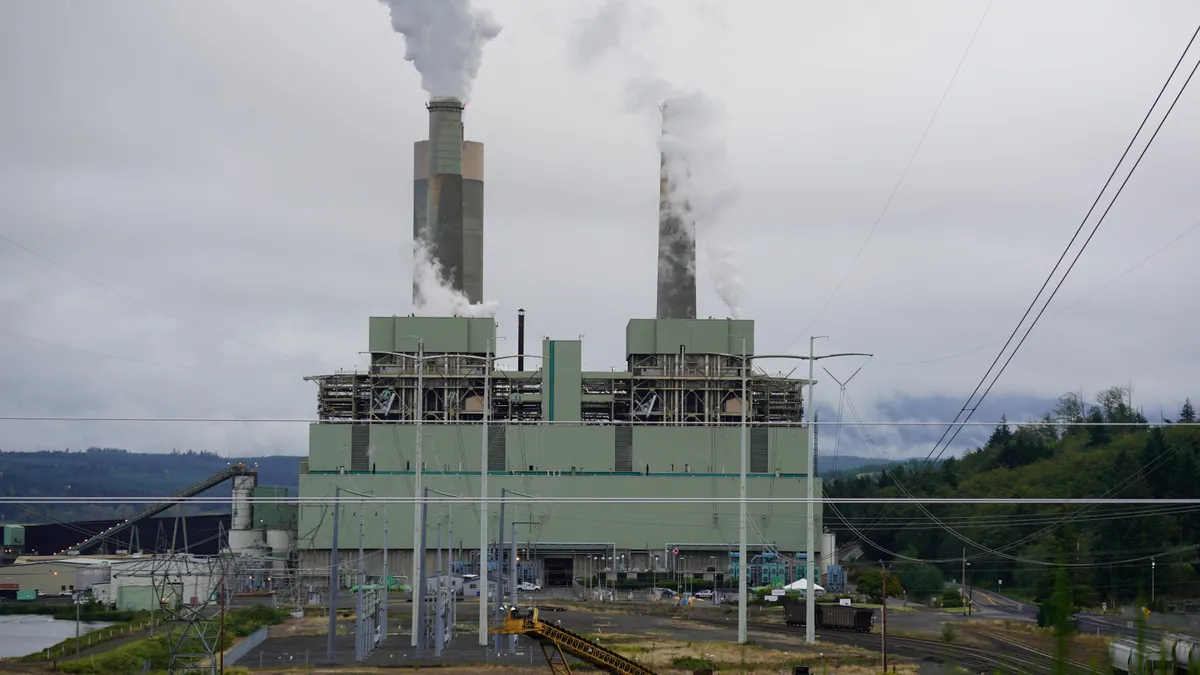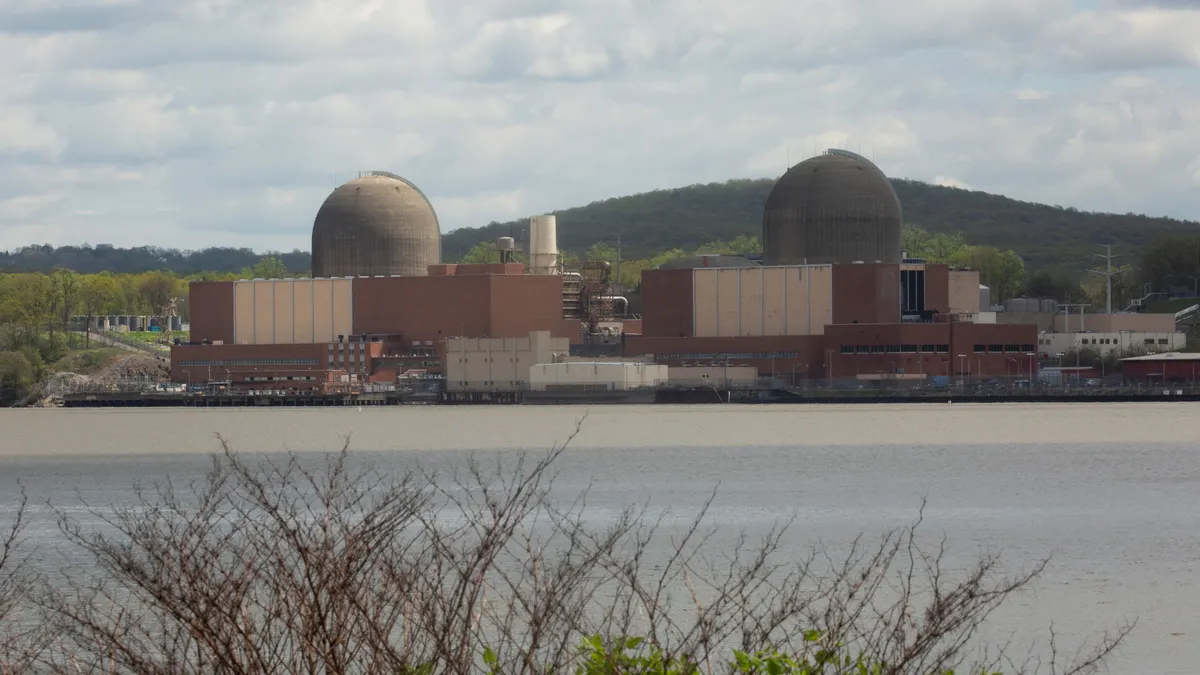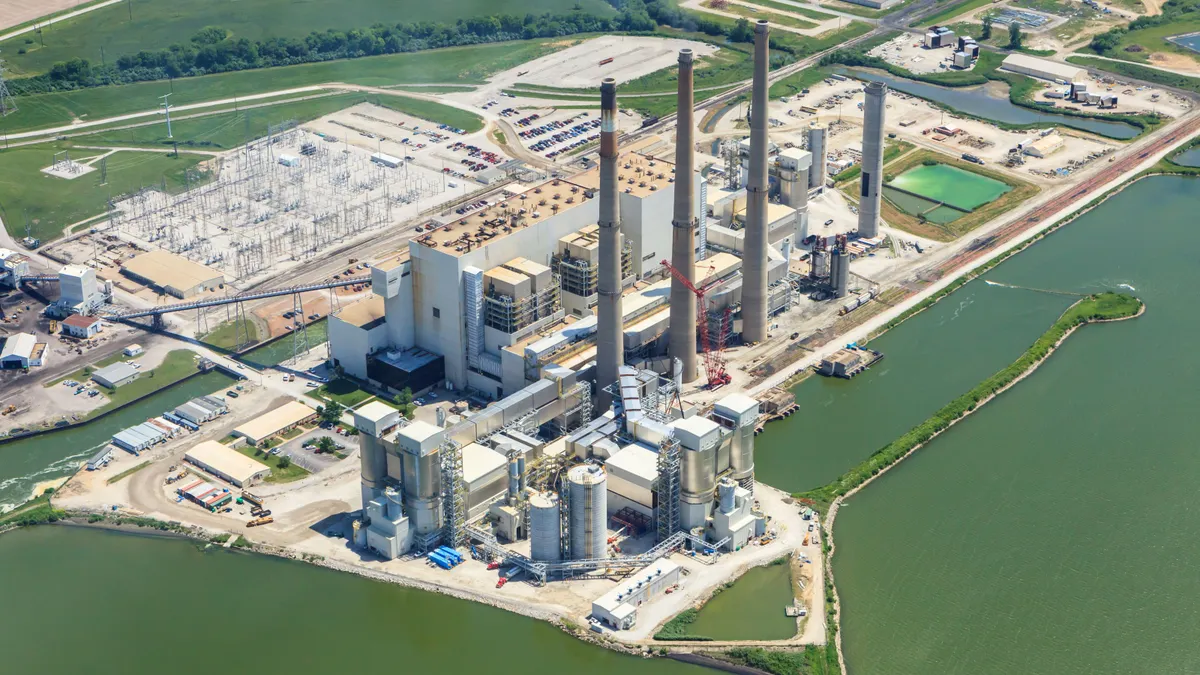The national Green New Deal generated heat in Congress when it was introduced in early 2019, but cities are using it to heat up inspiration to battle climate change.
Rep. Alexandria Ocasio-Cortez, D-NY, spearheaded the national plan, a nonbinding resolution that calls for public investment in renewable energy and the power grid in a push toward decarbonization. Similar proposals have floated for more than a decade in some form, with Hillary Clinton's 2016 presidential campaign proposing comparably bold action.
Some cities have ambitious goals under the same moniker, with a focus on equity and livable cities.
- New York City leaders unveiled a Green New Deal aiming for a 30% additional emissions reduction by 2030.
- Los Angeles unveiled its Green New Deal as part of a four-year update to its sustainability plan, with targets around renewable energy and zero emissions.
- Smaller cities like Ithaca, NY have unveiled Green New Deal-style goals, building on work being done at the state level by New York and others.
It is part of a broader push at the city level to lead the fight against climate change, something more important to mayors since President Trump withdrew the United States from the Paris climate agreement.
"The recent refocus on federal action created an opportunity for the Green New Deal to thrive — a transformative agenda to deal with climate change, economic growth and historical inequity," Greg Carlock, a manager for Climate Action and Data at the World Resources Institute (WRI), told Smart Cities Dive in an email.
Fighting climate change
The biggest tenets for cities with green deals are lofty goals to reduce emissions on accelerated timelines, with a focus on buildings and transportation sectors.
New York City's Green New Deal commits to carbon neutrality by 2050 and the 100% use of clean electricity. It has other initiatives like requiring buildings to cut emissions, banning new glass-walled buildings and electrifying transportation fleets, while supporting the just-passed congestion pricing plan. The Deal adds to the sweeping Climate Mobilization Act that the city council passed recently.
"There's infrastructure challenges and then really at the core of this there's a recognition that we face a climate emergency," Daniel Zarrilli, chief climate policy advisor to New York Mayor Bill de Blasio, told Smart Cities Dive. "This is a plan to confront our climate crisis to achieve equity across the city and strengthen our democracy. For us, that's anchored in the need to go bigger and bolder on our climate action first and foremost."
Los Angeles has set goals for zero-carbon electricity grid, transportation and buildings and zero waste, which includes not sending trash to landfill and not wasting water. It is an update to Los Angeles' Sustainable City pLAn, which Mayor Eric Garcetti released in 2015.
City leaders note significant progress on the road to carbon-neutrality by 2050 under that existing plan, including developing incentive programs for solar power, studying the transition from fossil fuels to renewables and aiding the procurement of electric vehicles (EVs) for municipal fleets by creating the Climate Mayors EV Purchasing Collaborative.
"As we all know, the science has gotten a lot more dire over that intervening time period while the solutions really have never been more available to us," Los Angeles chief sustainability officer Lauren Faber told Smart Cities Dive. "We really wanted to take the approach, that the mayor had committed to upholding the Paris climate agreement, that we would act with urgency and provide a model really for the world on what it means for a global mega-city like Los Angeles to uphold the Paris climate agreement."
City officials see the effects of climate change as a public health issue, and said that if Los Angeles hits its 2050 goals, it will have saved more than 1,600 lives, 660 trips to the hospital and $16 billion in health care expenses each year.
Both cities also note the economic impacts of moving toward more sustainable energy sources and the ability to create more jobs, a dramatic shift from fossil fuel advocates who say that moving away from coal and natural gas is a job-killer.
"We need to counter this assumption that climate action is somehow bad for the economy," Emma Stewart, director for urban efficiency and climate at WRI's Ross Center for Sustainable Cities, told Smart Cities Dive. "That's just not been proven out. In fact, the growth economies have all taken aggressive climate action."
From a messaging standpoint, it is striking that multiple cities aligned under a banner of a Green New Deal, as only months ago it was barely on the political radar. Zarrilli and Faber said that efforts to combat climate change were well underway at their respective cities, with policies being implemented to move the needle. Stewart said that unified messaging is a step in the right direction.
"There's something to be said for aligning on messaging," she said. "It's not something the Democrats have typically been good at and is something the [Republican Party] has been excellent at, so I'm guessing that was what was behind it: they rightly understood it would get more national attention if they branded it as such."
An equitable approach
Beyond setting ambitious goals around fighting emissions and climate change, city-level Green New Deals are focused on areas like equity, the economy and workforce development — and how those can be leveraged to fight global warming's worst impacts. While they do not directly address climate change, initiatives centered around those topics can be crucial to making communities more resilient and livable.
Los Angeles' Green New Deal places a major emphasis on equity, and in converting residences to renewables or encouraging the purchasing of more electric vehicles (EVs), the plan prioritizes low-income communities with subsidies and other assistance so they can go green quicker.
"This is a plan to confront our climate crisis to achieve equity across the city and strengthen our democracy. For us, that's anchored in the need to go bigger and bolder on our climate action first and foremost."

Dan Zarrilli
Chief climate policy advisor to New York City Mayor Bill de Blasio
Researchers have warned city leaders that low-income neighborhoods bear a disproportionate share of environmental burden, an idea reiterated in a report from Yale last year. Low-income areas often have less access to transportation, less green space and more carbon-producing infrastructure such as major road thoroughfares and industrial areas.
"There's a whole panoply of approaches you can see in the Green New Deal that we specifically mark as equity initiatives to show that whether we're talking about policies in water, in renewable energy, in clean transportation, in waste, we're making sure we're paying specific attention to equity and designing our policies with that in mind," Faber said.
In New York City, the commitment to equity in the face of global warming means doing what city officials describe as "building a fairer city for all," with initiatives around expanding the municipal ID card, guaranteeing health care for residents and ending the opioid epidemic. These efforts go hand-in-hand with policies around bolstering public education, universal pre-K and workforce development.
Zarrilli said climate change will "touch every part" of residents’ lives in New York and could undermine its livability. Ensuring every resident has the chance to succeed will be imperative to maintaining the city's credibility as a diverse and good place to live, he said.
"What we were really thinking of and what underlaid this entire plan is thinking intergenerationally," Zarrilli said. "This is a plan that is really about those kids that are in our universal pre-K right now, this is the city that they're going to inherit when they're our age. We have to be able to deal with and think about all these things in an interconnected way."
Stewart said the general inequity experienced in the United States makes it a perfect target, especially if it can be rolled into climate action in an inclusive way.
"If you take buildings as an example, improving just the efficiency of a building improves productivity and health of the occupants, it improves test scores in schools and improves health outcomes in hospitals," she said. "Whichever way around you want to order them, they need to go hand-in-hand, and in many cases the human co-benefits are going to far outweigh from a dollar standpoint the greenhouse gas reductions."
A national call-to-arms?
It may be tempting for city leaders to pursue Green New Deals, but it can be tricky to know where to start.
Many are rolling out initiatives with sped-up timelines, but Stewart said that can be fraught with problems as many cities do not have the data on their emissions footprints. "Right now, they're not even on the on-ramp, let alone on the highway," she said.
Faber said that data collection and analysis is critical, but it can be challenging given that it is about more than emissions and greenhouse gas inventory, and instead is about "understanding where we are on a whole host of goals that we were setting."
While that requires analysis on a "granular level," Faber said, "Spending some time on data and getting a sense of where you are as a city in the areas that are highest priority is really important for science-based policy making but also really important from an accountability standpoint."
Stewart said WRI, cities and other organizations face two options as they look at initiatives like the Green New Deal. They can try for what Stewart called a "door-to-door, bottoms up approach," where city after city could unveil similar plans with wide-reaching goals. But, she said, that would likely be "expensive and woefully inefficient" given how quickly emissions cuts need to be enacted.
Instead, she said that a more effective strategy might be what her daughter termed the "flashlight in a tent approach." Under that method, policies in New York City and Los Angeles shine upwards and show what national and state policies are preventing them from acting, and at the same time show what is feasible at the local level to inspire others.
"All you need to do is work with a couple of cities, go up the chain to influence national policy and it will come back around to benefit all actors within the country and maybe even the private sector as well depending on how expansive the policies are," Stewart said. "That is in my mind a much more efficient way of tackling the gargantuan problem in front of us rather than going door-to-door and hoping that cities a) can get the data, b) can write the plan, and c) will then act on the plan."























